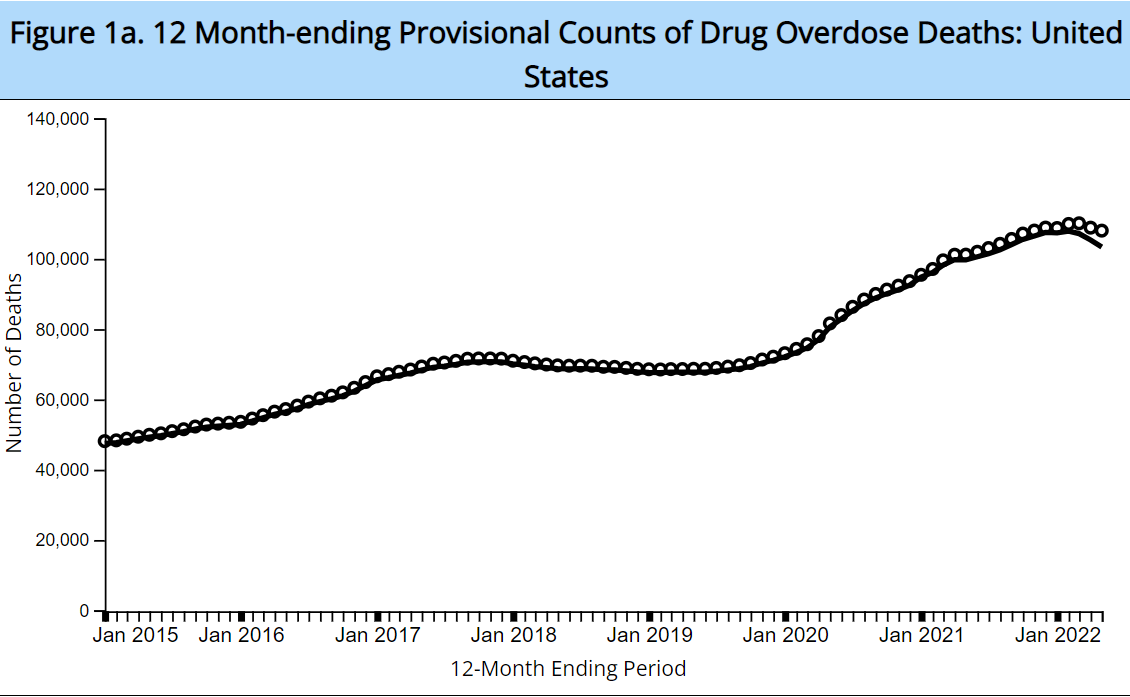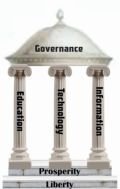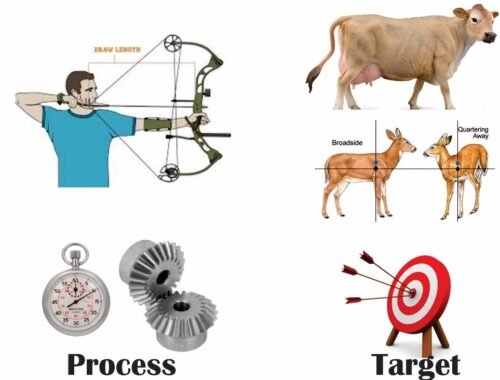
Critical Thinking and Policy: The Wars on Drugs and Poverty
In an effective government, the first rule of policy is to set goals and the implementing processes to accomplish them. Politicians and the bureaucracy, however, run the government. The first rule of politicians is to get re-elected. The first rule of bureaucrats is to perpetuate the bureaucracy.
As we look at these problems/issues, critical thinking needs to play a clear and prominent role. At the beginning, the critical thinking questions discussed in Critical Thinking: An Introduction to Key Concepts and Dimensions, Critical Thinking: Logic and Rationality, and Critical Thinking and Policy Development and Analysis. I developed the matrix below in Critical Thinking: Correlation, Causation, and Control, I developed the matrix in Table 1.
This blog applies this matrix to the Wars on Drugs and Poverty. It also assesses some of the cognitive biases that may be involved in assessing the situation and develops recommendations for change.
Arguably, any policy needs to be constitutionally correct. The Preamble to the Constitution provides a litmus test on constitutionality.
We the People of the United States, in Order to form a more perfect Union, establish Justice, insure domestic Tranquility, provide for the common defence, promote the general Welfare, and secure the Blessings of Liberty to ourselves and our Posterity, do ordain and establish this Constitution for the United States of America.
The War on Poverty and the War on Drugs can fit under the promoting the general welfare, ensuring domestic tranquility, and providing for the common defense. So let us look at these two “wars” in great detail to see whether they support the tenants in the preamble.
Poverty
Creating the Monster: The American Bureaucracy, and Part 7: The Great Society provides some background on the War on Poverty. They cite Edwin J. Feulner, in Assessing the ‘Great Society’ in 2014, who estimates the US had spent $22 trillion on 80 Great Society programs. The data in Creating the Monster shows that, if anything, poverty has gotten worse under the Great Society. According to official US Census data, poverty was falling before the Great Society program. After the Great Society legislation, poverty started trending up and female heads of households with no spouses grew. Contrary to the sign in the lead figure, the US is investing quite a bit of money into the War on Poverty. So, either the definition of poverty is changing, or the programs are a failure. Or both the definition changed, and the policies are wasting money. Is poverty relative? When American families in poverty have color TVs, cell phones and other creature comforts, we have to wonder about the definition of poverty. Arguably, the US population in poverty is a relative standard and the US population in poverty is better off than most of the world. The policy meets the general welfare clause, but do we have a danger to security if many still think they are in poverty and demand ever-increasing standards of living? Can we ever meet these demands when we have a growing population of poor from illegal immigration?
Drugs
“Provisional data from CDC’s National Center for Health Statistics indicate that there were an estimated 100,306 drug overdose deaths in the United States during 12-month period ending in April 2021, an increase of 28.5% from the 78,056 deaths during the same period the year before.” Centers for Disease Control

Source: https://www.cdc.gov/nchs/nvss/vsrr/drug-overdose-data.htm
By almost any measure, the War on Drugs is a failure and getting worse with fentanyl (see The Fentanyl Attack) and the porous southern border Violent drug cartels use this weakness to flow drugs and gang members into the US. In 2011, General (Retired) McCaffrey and Major General (Retired) Scales wrote Texas Border Security: A Strategic Military Assessment. They used the figure below to emphasize the weight of the problem. This map is like a larger map that we used at EUCOM to show the global trafficking networks. Once traffickers establish a network, traffickers can use it for drugs, slaves, sex, weapons, and other illicit trade.
In their executive summary, they wrote:

1Source: Texas Border Security: A Strategic Military Assessment
“During the past two years the state of Texas has become increasingly threatened by the spread of Mexican cartel organized crime. The threat reflects a change in the strategic intent of the cartels to move their operations into the United States. In effect, the cartels seek to create a “sanitary zone” inside the Texas border — one county deep — that will provide sanctuary from Mexican law enforcement and, at the same time, enable the cartels to transform Texas’ border counties into narcotics transshipment points for continued transport and distribution into the continental United States. To achieve their objectives the cartels are relying increasingly on organized gangs to provide expendable and unaccountable manpower to do their dirty work. These gangs are recruited on the streets of Texas cities and inside Texas prisons by top-tier gangs who work in conjunction with the cartels.”
Of note, drug trafficking is often associated with human and weapons trafficking as well. They wrote this in 2011 before fentanyl was a major problem and before the border became the mess that it is today. The cartels are growing rich and powerful on this trade and almost certainly bringing their soldiers into US cities mixed with the staggering flow of illegal immigrants.
| Table Policy Critical Thinking Analysis | ||
| Question | Poverty | Drugs |
| Why? | There is no defined standard that I can find that provides an objective. The ostensible reason is to reduce, if not eliminate, poverty. But at what point does the policy succeed or do the goalposts keep moving as the definition of poverty changes? | There is no defined standard that I can find that provides an objective. The ostensible reason is to reduce, if not eliminate, drug addiction and the costs to society. |
| Cui Bono (who benefits)? | The targeted beneficiaries are families in poverty. But as the data shows, they are not benefiting, and the policy may even harm them. Perhaps the real beneficiaries are the poverty bureaucracy through jobs. This includes both government bureaucrats and the contractors that support them. | The targeted beneficiaries are the people at risk for drugs. But at the data shows, they are not receiving many benefits. The real beneficiaries are the cartels and the drug bureaucracy. The war keeps profit high for the cartels and risks manageable. The bureaucracy associated with the Drug Enforcement Agency and the Food and Drug Agency also benefits through long-term employment. With regulatory capture, they can also benefit through contacts with the drug companies and perhaps even the cartels. |
| Sine qua non (what is essential for success?) | US citizens have a strong education and virtue-based culture that allows them to thrive in a dynamic, productive, and successful economy. | US citizens have access to effective drug education programs, a safe and secure drug supply, and the cartels can no longer traffic and threaten the safety and security of the US. |
| Aurea Mediocritas (what is the golden mean?) | Poverty cuts to the heart of the Preamble to the Constitution. It affects almost every part of the Republic. Extreme poverty can affect stability if people in poverty and their supporters push for changes. This affects education as well. When schools lower standards, they cheat the poor of an excellent education for the prospect of an increasingly worthless degree. We will not get people out of poverty and promote the commonwealth under the current social, economic, and educational regimes. | Drugs affect many aspects of society, economics, and culture. A citizen addicted to drugs costs society through lost productivity, treatment costs and incarceration costs. Drug addiction and the associated trafficking networks shape culture and security. Look at games such as Grand Theft Auto, where the game rewards players for illegal activities. Look at the amount of screen time these activities get on movies and social media. |
| Ceteris Paribas (all other things being equal) | If the government does not engage in poverty programs, the private sector must. This is the way the Republic started and Alexis de Tocqueville, in Democracy in America, cited this practice as an American strength. Nearly 200 years after his observation, can the private sector do this task? Is the world too complex now? Has the government engaged in this activity for so long the private sector cannot engage effectively? | If the government does nothing, the cartels will continue trafficking of all kinds and destroy the fabric of American society. There is no real “do nothing” alternative. The question is, “what to do?” |
A Way ahead:
| Poverty | Drugs | |
| Actions |
|
|
| Notes |
|
|
These two policies can, and do, destroy prosperity, disrupt culture, and set the conditions for further social justice policies. Policy is complex and understanding the issues involved requires an integrated and facts-based approach. The owner operators of the Republic need to hold elected politicians and unelected bureaucrats accountable for accurate information and results. People who honestly think we are spending nothing on poverty like the guy carrying the sign in the opening figure need education. They elect politicians who similarly either do not understand or deliberately manipulate memes and data.





